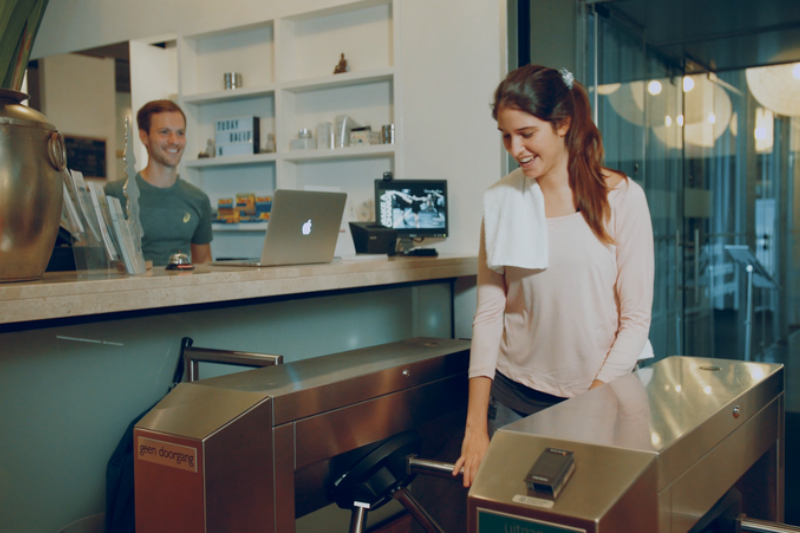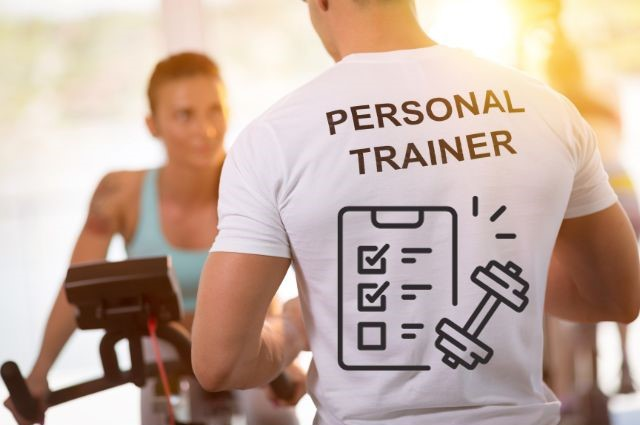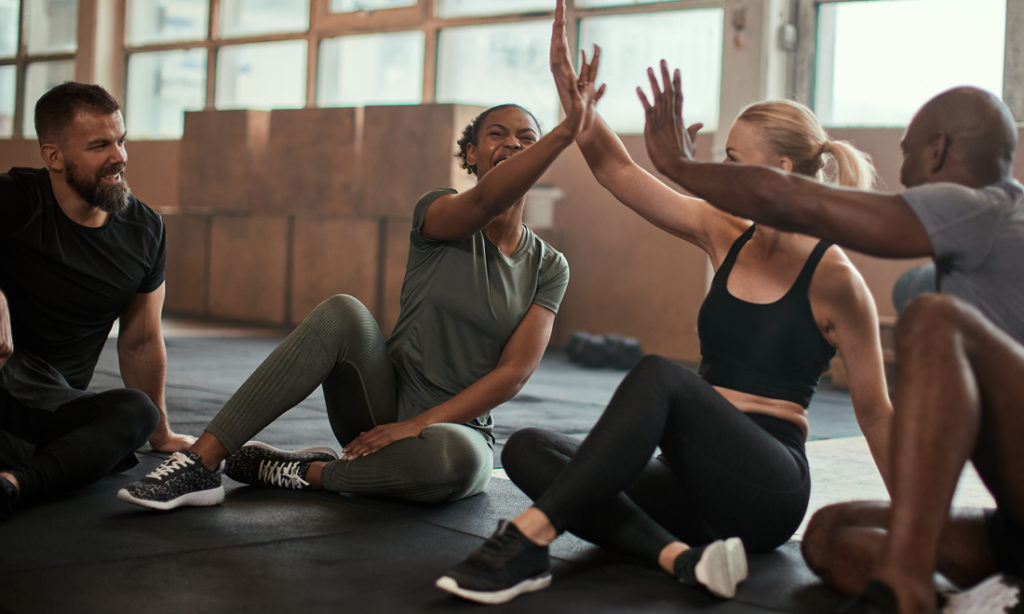Blog

How You Can Maximize Personal Trainer Revenue With Virtuagym Pay
Learn how Virtuagym Pay revolutionizes personal trainer revenue through automated payments and streamlined financial management.

7 Strategies to Amplify Your Personal Trainer Revenue Growth
Discover 7 powerful strategies to boost your revenue as a Personal Trainer and secure your financial future.

9 Powerful Personal Training (PT) Membership Promotions To Get New Clients
Unlock growth opportunities for your personal training business with these membership promotions designed to attract new clients and increase revenue.

How To Attract Customers as a Personal Trainer?
Boost your Personal Training business and attract more customers with proven strategies in branding, social media, and referrals.

How to Maximize Gym Revenue With AI?
Unlock the power of AI to boost gym revenue through personalized experiences, chatbots, smart gear, automated content, and predictive insights.

21 Tried and Tested Ways to Increase Gym Revenue
Explore 21 innovative ways to expand your gym's income streams and elevate profitability. Start growing your fitness business today!

8 Membership Promotion Ideas To Attract New Members to your Gym
Discover powerful gym membership promotions to attract new members and increase sales. Boost your fitness business with these effective strategies.

How to Attract People to Your Gym?
Learn proven gym marketing strategies to attract new customers and increase membership. Boost visibility and draw in more members with innovative tactics.

Virtuagym's Best Features to Engage Personal Trainer Clients
Elevate client engagement with Virtuagym's comprehensive features. Streamline management, schedule appointments, and deliver personalized plans effortlessly.

How To Avoid Cancellations in Personal Trainer Business?
Learn strategies to reduce cancellations, retain clients, and boost revenue in your personal training business.

Embrace the New Year Rush: Harness the Power of Data with Virtuagym’s All-New Fitness Business Analytics Software
Dive into the world of fitness data analytics and uncover strategies to boost your fitness business during the New Year Rush. Learn how personalized services, predictive analytics, and Virtuagym's Business Analytics can transform your approach and drive success.

16 Fitness Studio Event Ideas to Boost Your Engagement
Engage fitness studio members with unique event ideas! Boost loyalty and attract new clients by adding excitement to your fitness studio

Best VG Fitness Studio Engagement Features To Keep Your Clients Engaged
Discov Virtuagym's top engagement features for fitness studios in 2024. Boost client retention and grow your business with our tailored solutions!

How to Avoid Cancellations in your Fitness Studio?
Explore proven strategies to avoid cancellations and boost retention in your fitness studio. Learn how to keep clients engaged all year round.

11 Strategies to Keep Your Fitness Studio Clients Engaged
Boost fitness studio engagement with personalized programs, community building, and more! Learn 11 proven strategies for a thriving and welcoming environment

Effective Gym Onboarding Strategies to Increase Member Retention
Unlock successful gym onboarding strategies for new members. Foster support, boost motivation, and cultivate a thriving fitness community.

Turn your members into ambassadors with Virtuagym's smart customer engagement features
Discover how Virtuagym fosters loyalty by empowering fitness entrepreneurs to create vibrant communities within their gyms, engaging members for lasting brand advocacy

How to Avoid People Quitting the Gym?
Discover innovative ways to retain gym members amid challenges post-pandemic. Explore data-driven strategies and tools for enhanced member engagement and loyalty

The Complete Guide to the Gym Customer Journey
Learn how to effectively capture the attention of potential members, engage their interest, nurture their desire to join, and drive them to take action. Discover strategies to create a welcoming and engaging gym experience, ensuring that members stay loyal and become advocates for your fitness facility.

Choosing a certified personal trainer: Freelancer or a permanent team member?
Explore the key factors to consider when deciding between hiring a freelance personal trainer or adding a permanent team member to your fitness business. Make an informed choice for your fitness journey.

A comparison of the 8 best personal trainer software in 2023
Discover the ultimate guide to the best personal trainer software. Compare features, benefits and suppliers and discover the best software today.

SWOT Analysis of Opening a Personal Training Business
Explore the ins and outs of personal training business with a SWOT analysis. Uncover strengths, address weaknesses, seize opportunities, and navigate potential threats for success.

What are the Costs of Opening a Personal Training Business?
Get insights on starting a personal training business - from certifications to costs, we've got you covered!

How to start a personal trainer business
Launch and grow your successful personal training business with expert guidance and strategies. Start now!

Make more money with a 24/7 gym
Explore the ins and outs of running a successful 24/7 gym. Learn about access control, pricing strategies, and the unique advantages of round-the-clock fitness.

How to choose your personal training business name?
Discover expert advice on selecting the perfect name for your personal training business. This blog covers brainstorming, competitor research, memorability, keyword integration, and aligning with your brand values. A strong name boosts your brand identity, online presence, professionalism, and gives you control. Get inspired with 100+ catchy business name ideas. Make a lasting impression with the right fitness practice name.

What are The Requirements to Open a Personal Training Business?
Discover the essential steps to start your own personal training business. From certification and legalities to equipment, marketing, and success strategies, our blog offers a concise roadmap for turning your fitness passion into a thriving business. Join the fitness revolution today!

Dealing With Inflation As a Gym, Studio or Personal Trainer
Dealing with inflation, soaring prices, and the cost of living pose a particular challenge for entrepreneurs in the fitness industry.

Avoid Failure: The SWOT Analysis of a Fitness Studio You Can't Afford to Ignore
Dive into a thorough SWOT analysis of a fitness studio, uncovering its strengths like a strong brand and loyal customer base, recognizing weaknesses such as financial limitations and high turnover, exploring opportunities like niche markets and collaborations, and addressing threats like fierce competition and changing customer behavior.

5 Fitness Studio Requirements to Keep in Mind Before You Launch
Discover the essential steps to turn your fitness studio dream into reality. From legal requirements to equipment choices, services, marketing, and financial planning, this guide covers it all. Start building a thriving fitness hub today!

The best fitness studio software: The power of fitness management in 2023
Explore how fitness management software is revolutionizing the industry in 2023, empowering gyms and studios for streamlined operations and a top-notch member experience. Discover top solutions and key considerations for your fitness business.

Best gym management software solutions
Discover the most advanced solutions that simplify administrative tasks and enhance member experiences. From membership management to scheduling and billing, these tools empower fitness professionals to excel in their primary mission – helping clients achieve their health and fitness goals. Explore the best gym software options and transform your fitness center's operations today.

Crafting inclusive gyms: Fostering diversity, body positivity and community support
Creating an inclusive fitness environment involves embracing diversity, promoting body positivity, ensuring accessibility, and fostering a supportive staff culture. We offer personalized fitness plans, community support through events and groups, and celebrate diverse fitness journeys.

How Much Does it Cost to Open a Fitness Studio?
Explore the financial aspects of starting a fitness studio with our comprehensive guide. Learn about preliminary costs, property acquisition, equipment expenses, operational and marketing costs, and more.

How to Choose Your Fitness Studio Name?
Crafting the perfect fitness studio name is an art. Discover how to capture your brand's essence, evoke emotions, and stand out in the competitive fitness industry with this comprehensive guide. From brainstorming and AI assistance to legal checks and finalization, every step is outlined to help you create a name that's more than just words—it's an identity. Explore ideas, strategies, and considerations to ensure your fitness studio name becomes a powerful symbol of your mission and a beacon of transformation.

How to Open a Fitness Studio?
Embark on the exhilarating journey of opening your own fitness studio. Our guide covers business planning, naming, mission, location, licenses, insurance, design, equipment, trainers, pricing, and software for success. Start strong in the fitness industry!